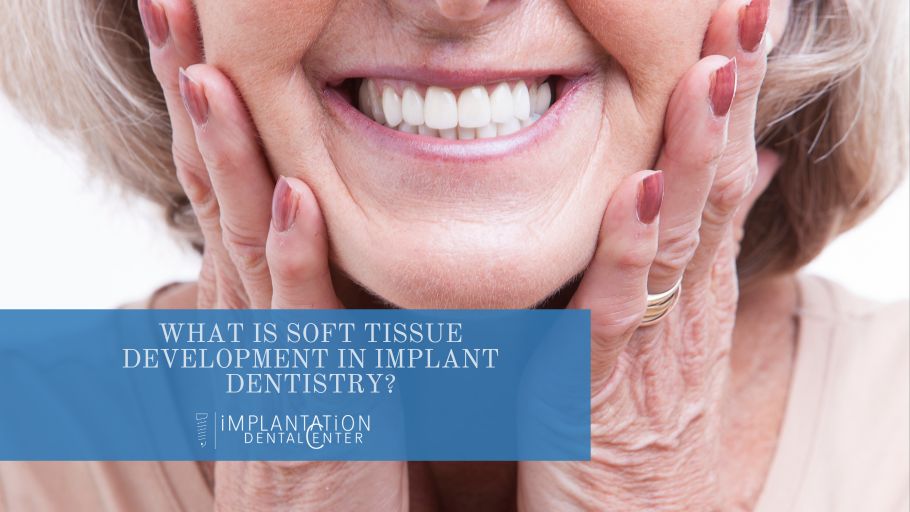Soft tissue development in implant dentistry refers to the process of manipulating the gums and other soft tissues surrounding dental implants, to achieve a more esthetically pleasing and functional outcome. This process involves careful management of the soft tissue during the implant placement procedure and subsequent restoration, with the aim of achieving the ideal contour, texture, and color of the gingiva around the implant.
Soft tissue development may be necessary in cases where there is insufficient soft tissue volume or quality around the dental implant site, resulting in an unaesthetic or functionally compromised outcome. Techniques such as gingival augmentation, connective tissue grafting, and guided tissue regeneration may be used to enhance the soft tissue around dental implants and improve their long-term success.
Soft tissue development is an important aspect of implant dentistry, as it can greatly affect the final aesthetic and functional outcome of the treatment. It requires careful planning, skillful execution, and ongoing maintenance to achieve the best results.
How provisional restorations helps developing soft tissue?
Provisional restorations can play an important role in developing soft tissue around dental implants. A provisional restoration, also known as a temporary restoration, is a temporary replacement for a missing or damaged tooth that is used while a permanent restoration is being made. In implant dentistry, provisional restorations are often used to help shape the soft tissue around the implant site during the healing process.
When a dental implant is placed, the soft tissue around the implant can shift and change as it heals. This can lead to an uneven or unaesthetic appearance of the gums around the implant. Provisional restorations can help to stabilize the soft tissue around the implant and maintain the ideal shape and contour during the healing process. This can lead to more predictable soft tissue development and a more esthetically pleasing final restoration.
Additionally, provisional restorations can also be used to guide the development of the soft tissue around the implant site. By carefully shaping the provisional restoration, the prosthodontist can encourage the gum tissue to grow in a way that complements the final restoration. This can help to create a natural-looking and harmonious appearance between the implant and the surrounding teeth and soft tissue.
Overall, provisional restorations can be an important tool in the development of soft tissue around dental implants. By stabilizing and guiding the soft tissue during the healing process, provisional restorations can help to achieve a more predictable and esthetically pleasing final result.
What are some of the techniques in soft tissue development?
There are various techniques that can be used to develop soft tissue around dental implants. Some of the commonly used techniques include:
- Gum Grafting: This involves taking a small piece of tissue from the patient’s own mouth (usually the palate or roof of the mouth) and grafting it onto the gum tissue around the implant site. The tissue is secured with sutures and allowed to heal, resulting in increased volume and improved contour of the gum tissue.
- Connective Tissue Grafting: In this technique, a small incision is made in the patient’s palate, and a piece of tissue is removed from underneath the surface. This tissue is then used to augment the soft tissue around the implant.
- Guided Tissue Regeneration: This technique involves the use of a barrier membrane to prevent the migration of gum tissue into the implant site, allowing bone tissue to grow instead. The membrane is removed after a few months, and the gum tissue is then allowed to grow around the implant.
- Pinhole Surgical Technique: This is a minimally invasive technique that involves making a small hole in the gum tissue near the implant site and using special instruments to loosen the tissue and move it into a more desirable position around the implant.
- Orthodontic Extrusion: This involves the use of orthodontic forces to move a damaged tooth or implant post back into the gum tissue, encouraging the growth of new soft tissue around the implant.
- Tissue Engineering: This technique involves the use of biocompatible materials and growth factors to stimulate the growth of new soft tissue around the implant.
The choice of technique will depend on the individual patient’s needs and the extent of soft tissue deficiency or damage. A thorough evaluation by a dental professional is necessary to determine the most appropriate technique for each patient. We invite you to contact us at Implantation Dental Center, for a consultation with Dr. Hervas at our office in Plantation, Florida.



